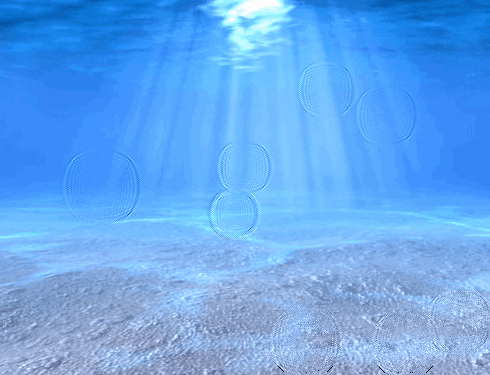Maison >interface Web >Tutoriel H5 >Utilisez HTML5 Canvas pour créer un effet d'ondulation de l'eau qui sera déclenché lorsque vous cliquerez sur les compétences du didacticiel Picture_html5.
Utilisez HTML5 Canvas pour créer un effet d'ondulation de l'eau qui sera déclenché lorsque vous cliquerez sur les compétences du didacticiel Picture_html5.
- WBOYWBOYWBOYWBOYWBOYWBOYWBOYWBOYWBOYWBOYWBOYWBOYWBoriginal
- 2016-05-16 15:47:292339parcourir
Aujourd'hui, nous continuons à partager des exemples d'effets implémentés en JavaScript. Cet article présentera l'utilisation de JavaScript pour obtenir l'effet d'entraînement de l'eau. L'effet de vague d'eau utilise l'image comme arrière-plan et sera déclenché en cliquant n'importe où sur l'image. Parfois, nous pouvons créer une solution intéressante en utilisant du Javascript simple. 
Téléchargement du code source
Étape 1. HTML
Comme avant, le premier est le code HTML :
Copier le code
Le code est le suivant :;
;corps>
Effet de gouttes d'eau
canvas id="water ">Navigateur compatible HTML5 requis 🎜>
🎜> Étape 2 . CSS
Voici le code CSS utilisé :
Copier le code
Le code est le suivant :
body{background:#eee;margin:0;padding:0}
.example{background:#FFF;width:600px;border:1px #000 solid;margin:20px auto;padding:15px;-moz-border-radius: 3px;-webkit-border-radius: 3px}
#eau {
largeur:500px
} hauteur:400px; ; display: block margin:0px auto; cursor:pointer; #switcher {
text-align:center; 🎜>marge:15px; #switcher img {
largeur:160px;
hauteur:120px
}
Étape 3. JS
Ce qui suit est le code JavaScript principal :
Copiez le code
Le code est le suivant :
largeur:160px;
hauteur:120px
}
Étape 3. JS
Ce qui suit est le code JavaScript principal :
Copiez le code
Le code est le suivant :
fonction drop(x, y, amortissement, ombrage, réfraction, ctx, screenWidth, screenHeight){
this.x = x;
this.y = y;
this.shading = shading;
this.refraction = réfraction ;
this.bufferSize = this.x * this.y;
this.damping = amortissement;
this.background = ctx.getImageData(0, 0, screenWidth, screenHeight).data;
this.imageData = ctx.getImageData(0, 0, screenWidth, screenHeight);
this.buffer1 = [];
this.buffer2 = [];
for (var i = 0; i < this.bufferSize; i ){
this.buffer1.push(0);
this.buffer2.push(0);
}
this.update = function(){
for (var i = this.x 1, x = 1; i < this.bufferSize - this.x; i , x ){
if ((x < this.x)){
this.buffer2[i] = ((this.buffer1[i - 1] this.buffer1[i 1] this.buffer1[i - this.x] this.buffer1[i this.x]) / 2) - this.buffer2[i];
this.buffer2[i] *= this.damping;
} sinon x = 0 ;
}
var temp = this.buffer1;
this.buffer1 = this.buffer2;
this.buffer2 = temp;
}
this.draw = function(ctx){
var imageDataArray = this.imageData.data;
for (var i = this.x 1, index = (this.x 1) * 4; i < this.bufferSize - (1 this.x); i , index = 4){
var xOffset = ~~(this.buffer1[i - 1] - this.buffer1[i 1]);
var yOffset = ~~(this.buffer1[i - this.x] - this.buffer1[i this.x]);
var shade = xOffset * this.shading;
var texture = index (xOffset * this.refraction yOffset * this.refraction * this.x) * 4;
imageDataArray[index] = this.background[texture] shade;
imageDataArray[index 1] = this.background[texture 1] ombre ;
imageDataArray[index 2] = 50 this.background[texture 2] nuance ;
}
ctx.putImageData(this.imageData, 0, 0);
}
}
var fps = 0 ;
var watereff = {
// variables
timeStep : 20,
réfractions : 2,
ombrage : 3,
amortissement : 0,99,
screenWidth : 500,
screenHeight : 400,
pond : null,
textureImg : null,
interval : null,
backgroundURL : 'data_images/underwater1.jpg',
// initialisation
init : function() {
var canvas = document.getElementById('water');
if (canvas.getContext){
// fps country
fps = 0;
setInterval(function() {
document.getElementById('fps').innerHTML = fps / 2 'FPS';
fps = 0;
}, 2000);
canvas.onmousedown = function(e) {
var mouse = watereff.getMousePosition(e).sub(new vector2d(canvas.offsetLeft, canvas.offsetTop));
watereff.pond.buffer1[mouse.y * watereff.pond.x mouse.x ] = 200;
}
canvas.onmouseup = function(e) {
canvas.onmousemove = null;
}
canvas.width = this.screenWidth;
canvas.height = this.screenHeight;
this.textureImg = new Image(256, 256);
this.textureImg.src = this.backgroundURL;
canvas.getContext('2d').drawImage(this.textureImg, 0, 0);
this.pond = new drop(
this.screenWidth,
this.screenHeight,
this.damping,
this.shading,
this.refractions,
canvas. getContext('2d'),
this.screenWidth, this.screenHeight
);
if (this.interval != null){
clearInterval(this.interval);
}
this.interval = setInterval(watereff.run, this.timeStep);
}
},
// changer la fonction d'image
changePicture : function(url){
this.backgroundURL = url;
this.init();
},
// obtenir la fonction de position de la souris
getMousePosition : function(e){
if (!e){
var e = window.event;
}
if (e.pageX || e.pageY){
return new vector2d(e.pageX, e.pageY);
} else if (e.clientX || e.clientY){
return new vector2d(e.clientX, e.clientY);
}
},
// dessin de boucle
run : function(){
var ctx = document.getElementById('water').getContext('2d');
watereff.pond.update();
watereff.pond.draw(ctx);
fps ;
}
}
window.onload = function(){
watereff.init();
}
正如你所看到的,这里使用 Vector2D 函数,这个函数在 vector2d.js 里提供了。另一个很难的方法是使用纯数学实现,感兴趣的可以自己实验一下。
Déclaration:
Le contenu de cet article est volontairement contribué par les internautes et les droits d'auteur appartiennent à l'auteur original. Ce site n'assume aucune responsabilité légale correspondante. Si vous trouvez un contenu suspecté de plagiat ou de contrefaçon, veuillez contacter admin@php.cn
Article précédent:html5 mettre à jour l'exemple de couleur de l'image code_html5 compétences du didacticielArticle suivant:html5 mettre à jour l'exemple de couleur de l'image code_html5 compétences du didacticiel
Articles Liés
Voir plus- Le plug-in de défilement plein écran AlloyTouch crée une page H5 fluide en 30 secondes
- Combat réel HTML5 et analyse des événements tactiles (touchstart, touchmove et touchend)
- Explication détaillée des exemples de dessin d'images dans le canevas HTML5 9
- Expressions régulières et nouveaux éléments HTML5
- Comment combiner NodeJS et HTML5 pour glisser-déposer plusieurs fichiers à télécharger sur le serveur

